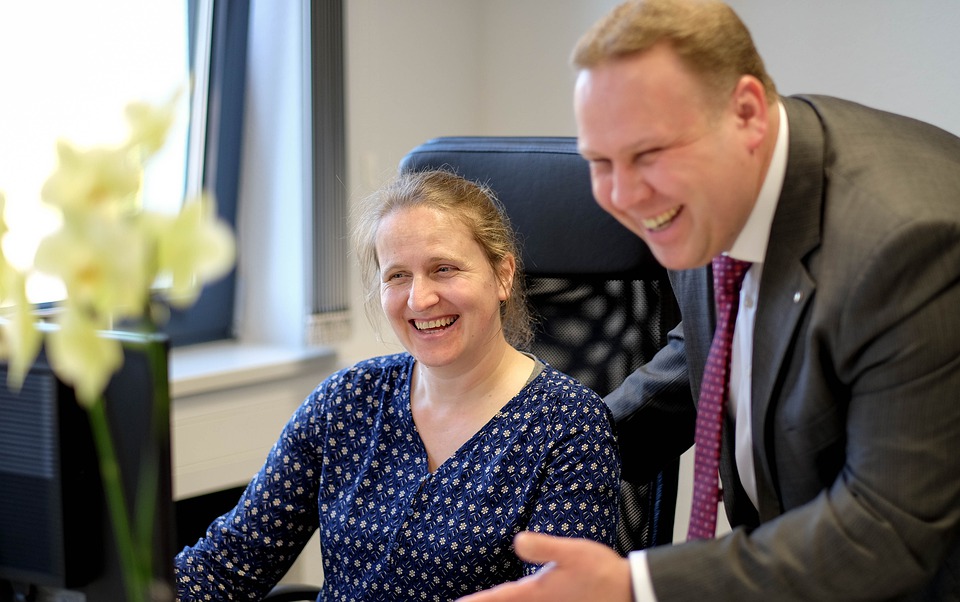
Strong relationships with your organization’s stakeholders will go a long way in helping you forecast and identify problems, as well as formulate and roll out effective solutions. However, these kinds of relationships are not built overnight. Aside from identifying your key stakeholders and learning the truth about them, you also have to keep the connection by making them feel understood. Once you have already established a connection with your stakeholders, maintaining it will largely depend on assuring them, on a deeper level, that you care about them and also have their best interests in mind. To demonstrate this, you need to learn about and use specific social intelligence skills.
Help Your Stakeholders Feel Understood Using 3 Social Intelligence Methods
To facilitate a better exchange of thoughts and ideas, you can employ specific, tried-and-tested methods whenever you engage with your key influencers informed by social intelligence. Social intelligence refers to the strategic capacity to evaluate and influence other people’s emotions and relationships. Social intelligence-based methods will allow you to break the ice as well as strengthen the trust between your organization and your stakeholders. It’s often hard to do so due to dangerous judgment errors called cognitive biases, but you can use research-based strategies to notice such blind spots and overcome them. A few months ago, I met with Steve, a coaching client of mine who was, at the time, coming into a mid-size manufacturing company as a new CEO hired from the outside. He had already met most of the members of the current C-suite during a company-wide event but he was looking to build strong relationships with them as soon as possible by meeting with them one-on-one. Steve approached me for advice because his meetings weren’t going well. While he tried to be cordial and gracious, his attempts weren’t received warmly and instead were met with defensive and evasive responses. He suspected that the current C-suite was wary of him because he was hired externally, while they had all worked together for over a decade, and would have much preferred to have one of the old-timers be put in the leadership position. He wasn’t sure what to do. Should he work on winning their trust or work on getting rid of the current C-suite and bringing in some fresh faces? I convinced Steve not to jump to conclusions and to keep an open mind about the current executives. After all, he can always fire them later. First, he needed to try to break the ice and only after that can he start to really connect and win their trust. And after that, he can evaluate who should be on the bus, and who needs to get off the bus. I advised him to use the following methods so that he can foster a sincere and welcoming environment when meeting with the executives.1. Empathetic Listening
Go beyond the surface level when trying to understand your key influencers. This means that when they are communicating with you, you should listen to what they mean and not just what they say. Your goal is empathy, the skill of understanding what other people feel. Focus not only on their message’s content, but also on their tone and body language. By doing so, you will be able to figure out what they mean and what explains their feelings. One of the best ways to demonstrate empathy while engaging with your key influencers is to show them that you are paying full attention to them and nothing else, through: (a.) Nonverbal signals of attention, which includes:- Constant eye contact (casual, not intense)
- Keeping your feet and shoulders pointed to them
- Keeping your arms open, if you are sitting
- Standing straight and not slouching, if you are standing
- Smiling, nodding, and using hand gestures at appropriate times
- Duchenne smile, not fake smile (includes eyes in smiling)
2. Echoing and Mirroring
Another way of showing that you are paying full attention is through echoing and mirroring, which includes: (a.) Rephrasing the essence of what your key influencer is saying with your own words every one to three minutes. For example:- “So what I’m hearing you say is ________. Is that right?”
- “You’re saying that _________. Do I have it correct and complete?”
3. Building Rapport
Finally, you can show your stakeholders that you understand them by building rapport. You need to help them feel that you are on their side and that you are part of their tribe. Without explicitly stating it, signal that you grasp their emotions, goals, incentives, values and obstacles by doing any of the following: (a.) Express compassion (sense of caring) towards their emotions (b.) Find points of commonality between your goals and values and theirs (c.) Convey implicitly that you get what their obstacles and incentives are (d.) Use humor to help bring down defenses, while keeping in mind the following:- Avoid making fun of them or what they value
- Avoid sarcasm as it’s too often misunderstood
- Lightly make fun of yourself, as you’re the safest target
- The most impactful humor feels spontaneous. However, you can still build it in and people will still appreciate it.
- Integrate humor into your messages, both individual and broad
- Do diverse types of humor
- If you’re doing a presentation, virtual or in-person, use funny slides
Conclusion
The best way to help your stakeholders feel understood is to reach out to them with the goal of forming a lasting connection. You can achieve this by using the 3 social intelligence methods of empathetic listening, echoing and mirroring, and building rapport. By doing so, you will be able to break the ice, relate to each other, foster trust, and be confident that you can communicate openly at all times.Key Takeaway
Form lasting connections to stakeholders and help them feel understood by using the three social intelligence methods of empathetic listening, echoing and mirroring, and building rapport.—> Click to tweet
Questions to Consider (please share your answers below)
- When was the last time you had difficulty connecting when trying to converse with a stakeholder?
- What techniques from the article might help you build rapport with your stakeholders?
- Which next steps will you take based on reading this article?
Bio: Dr. Gleb Tsipursky is an internationally-recognized thought leader on a mission to protect leaders from dangerous judgment errors known as cognitive biases by developing the most effective decision-making strategies. A best-selling author, he is best known for Never Go With Your Gut: How Pioneering Leaders Make the Best Decisions and Avoid Business Disasters (Career Press, 2019), The Blindspots Between Us: How to Overcome Unconscious Cognitive Bias and Build Better Relationships (New Harbinger, 2020), and Resilience: Adapt and Plan for the New Abnormal of the COVID-19 Coronavirus Pandemic (Changemakers Books, 2020). He has over 550 articles and 450 interviews in Inc. Magazine, Entrepreneur, CBS News, Time, Business Insider, Government Executive, The Chronicle of Philanthropy, Fast Company, and elsewhere. His expertise comes from over 20 years of consulting, coaching, and speaking and training as the CEO of Disaster Avoidance Experts, and over 15 years in academia as a behavioral economist and cognitive neuroscientist. Contact him at Gleb[at]DisasterAvoidanceExperts[dot]com, Twitter @gleb_tsipursky, Instagram @dr_gleb_tsipursky, LinkedIn, and register for his free Wise Decision Maker Course.














